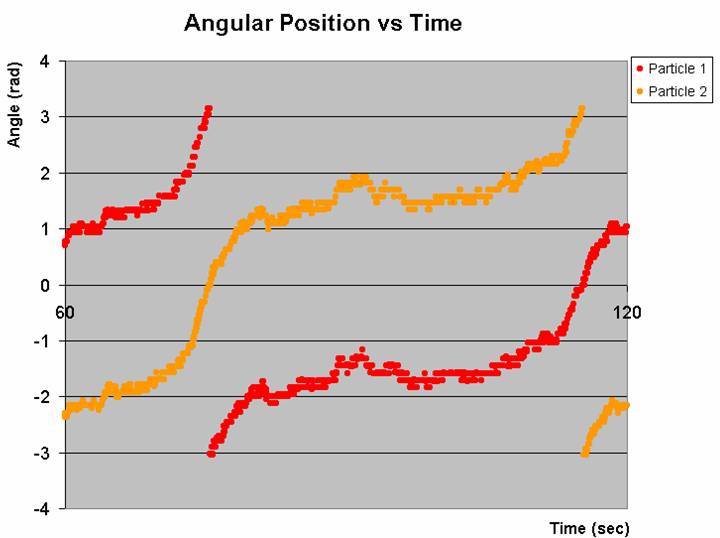1.2 - Periodic Pause
When the magnetic field is switched on, the
particles in a dust cluster rotate as a whole like a rigid body. And the
angular velocity of the dust cluster increases as the magnetic field strength
increases. But interestingly, the cluster does not go under uniform rotation
especially when the magnetic field is weak (0 to 15G). The angular velocity of
the cluster actually accelerates and then decelerates at a particular angle
(see Figure 1.2.1).
This phenomena observed in our experiment and also by other experimental groups is
what we defined as "Periodic Pause".
Figure 1.2.1 - Angle versus time for the two particles in a Planar-2 dust
cluster configuration. The rigidity of the crystal is shown from the
constant phase difference between the two particles. And the periodic pause
is shown from the slope of the graph. This visualization is drawn using
Microsoft Excel XP.
However, the reason why such periodic motion occurs in the cluster rotation is
unknown. Since at stronger magnetic field settings, the clusters goes under
uniform rotation, it would appear that the existence of the periodic pause is
dependent on the magnetic field strength. And in order to obtain this
relationship between the periodic pause, one method is to generate a 3-D
phase diagram for the cluster rotation.
Since conventional graphing packages (e.g. MS Excel, Kaleidagraph,etc) are
either insufficient or incapable of creating a 3-D plot, a better data
visualization method is necessary to obtain the information. In this project,
several software packages were used to provide us a scientific visualization of
how the periodic pause of the cluster changes as a function of magnetic field
strength.

